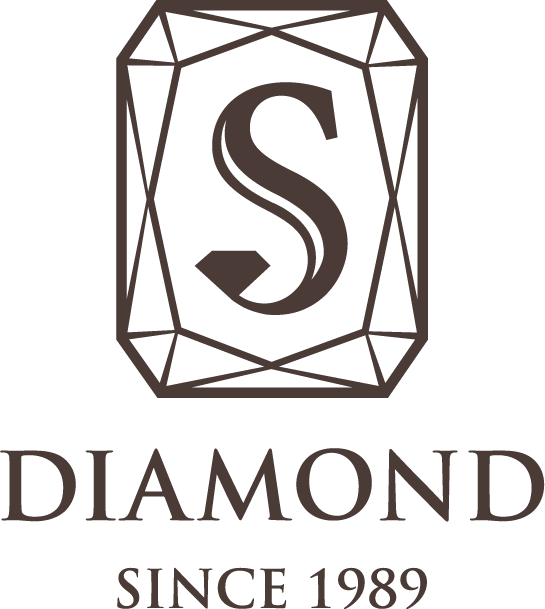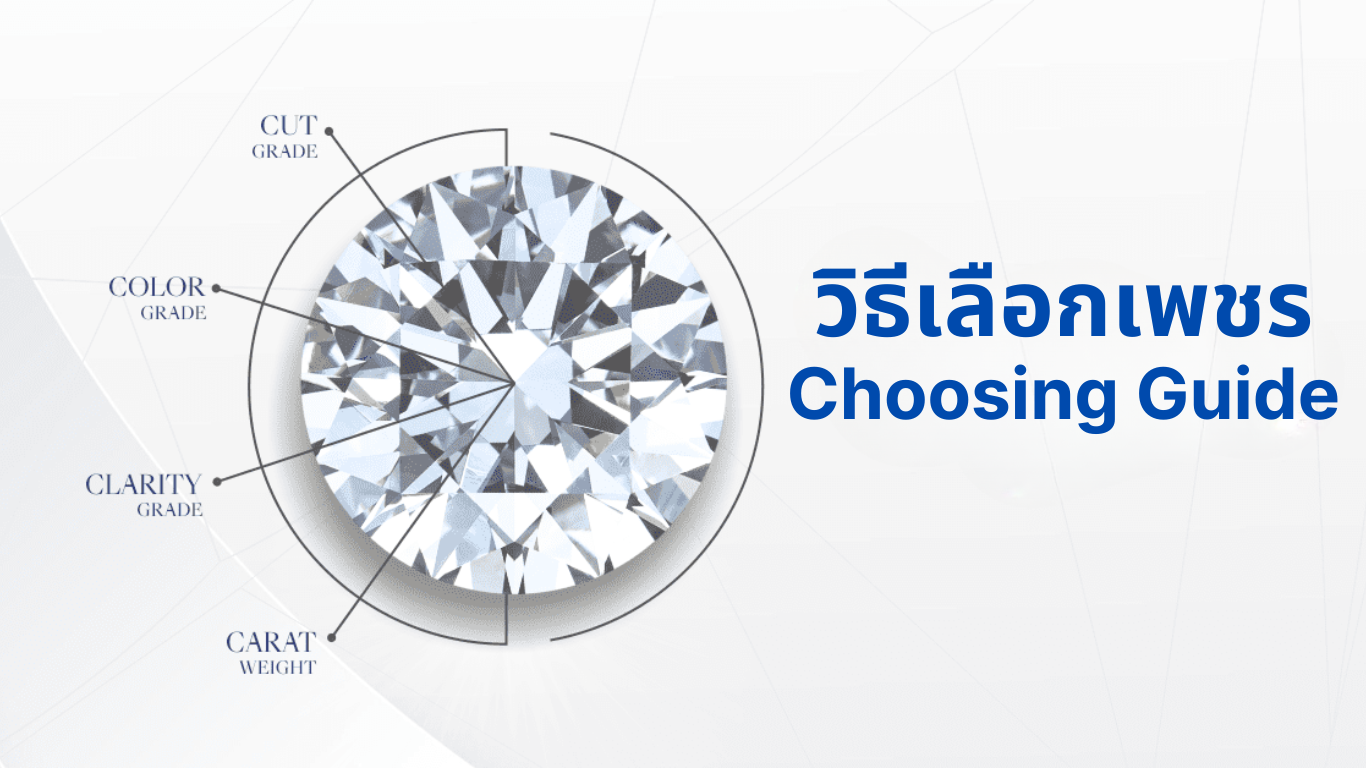
How to choose a diamond
Many people may have chosen to buy a diamond by considering only the size and clarity of the diamond.
S Diamond has a method for selecting diamonds using the 4Cs as follows:
1.Cutting : Triple Excellent Cut
Diamonds in the world can be cut into many shapes, which will affect the shape and size of the diamond's face. For anyone looking for a round diamond, S.Diamond recommends choosing a diamond with an Excellent Cutting or the best cut facets, because Cutting is an important factor affecting the sparkle of each diamond. Choosing a diamond with an Excellent Cutting makes the jewelry you wear shinier than a lower-level Cutting.
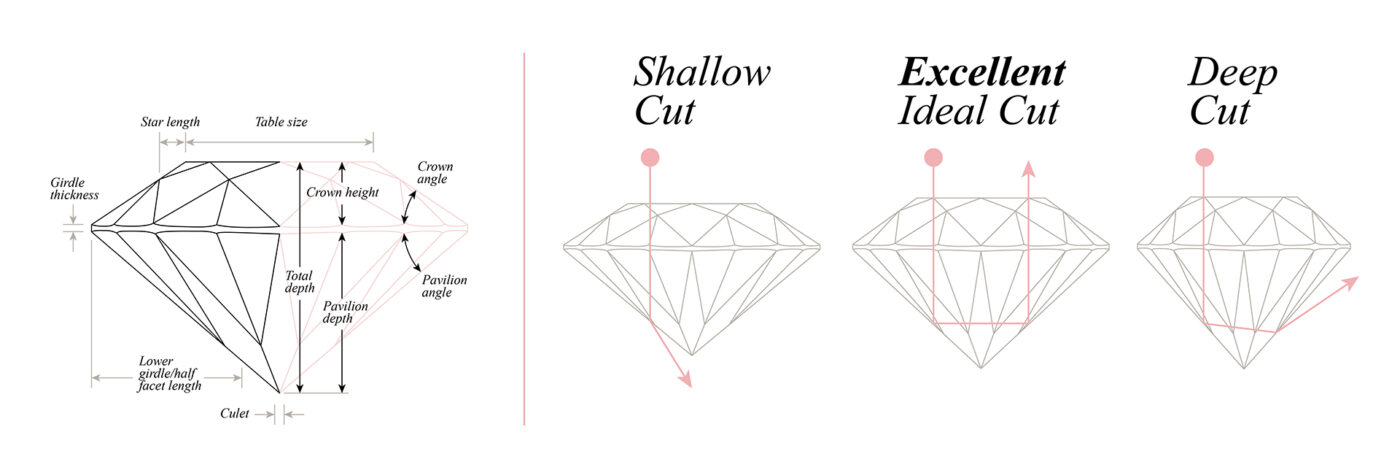
Hearts and Arrows
H&A in diamonds stands for Hearts and Arrows. It refers to a specific pattern of light performance visible in some round brilliant cut diamonds when viewed through specialized optical tools.
How H&A affects diamond beauty:
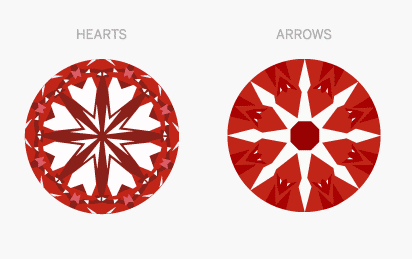
1. Light performance: H&A diamonds are cut to extremely precise proportions and symmetry, which optimizes their ability to reflect and refract light. This results in superior brightness, fire, and scintillation.
2. Symmetry: The H&A pattern indicates excellent symmetry in the diamond's facets, contributing to a more visually appealing appearance.
3. Cut quality: Diamonds with true H&A patterns are typically considered to have an "ideal" or "super ideal" cut grade, which is the highest standard in diamond cutting.
4. Visual effect: When viewed through a Hearts and Arrows viewer, these diamonds display eight symmetrical arrow patterns from the top and eight heart patterns from the bottom.
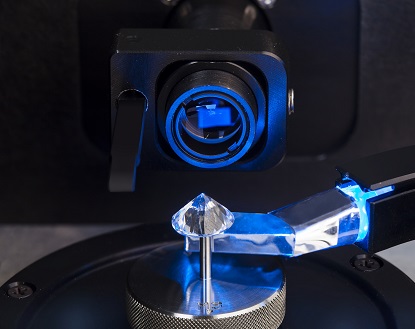
Every S.DIAMOND diamond is screened and selected using the Sarin light scatter detector, which is a tool for measuring the light scatter value of diamonds from S.DIAMOND LAB.
To get the most sparkling diamonds
2.Color, S.Diamond recommend color between J-D color
In nature, diamonds can come in many colors. White diamonds are considered the most popular. White diamonds come in several levels of color, running through letters from D (the whitest) all the way to Z, which is a soft yellow diamond. Many people often misunderstand. that choosing a good diamond only requires 100% water, but in addition to the color of the diamond You also need to consider other factors in choosing a diamond, such as the cut, as mentioned above.

3. Carat, carat is the weight of the diamond.
Another factor to consider in Another factor to consider when choosing a diamond is the weight of the diamond. The weight of a diamond in the international system is expressed in units of carats. A diamond weighing 1 carat is equal to 0.2 grams. The price of diamonds in each size is determined by the price per carat. Choosing a diamond that is large and heavy, the rarer it is, will have a higher value. Choosing a larger diamond therefore costs more per carat. Choosing diamonds that are smaller in size and less in weight will be easier to find. and has a lower cost.


4. Clarity, the cleanliness of the diamond
Clarity or level of purity or the cleanliness of the diamond It is the most important factor. When choosing a diamond Diamonds usually have natural inclusions. Diamonds that are pure are therefore harder to find. and has a higher value than diamonds that are less pure
Choosing a diamond by considering its clarity is a factor that should not be neglected. Because of the cleanliness of the diamond will affect the sparkle and the beauty of diamonds
The level of cleanliness of diamonds can be divided into 10 levels based on various factors, starting with IF or the clean level. Normally, the recommended clarity level when choosing a diamond starts from IF-VS1.
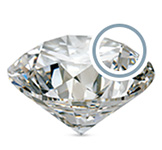

Diamond fluorescence
Diamond fluorescence refers to the effect that occurs when a diamond emits a soft glow under ultraviolet (UV) light.
This phenomenon is caused by certain minerals or trace elements within the diamond's structure that react to UV radiation.
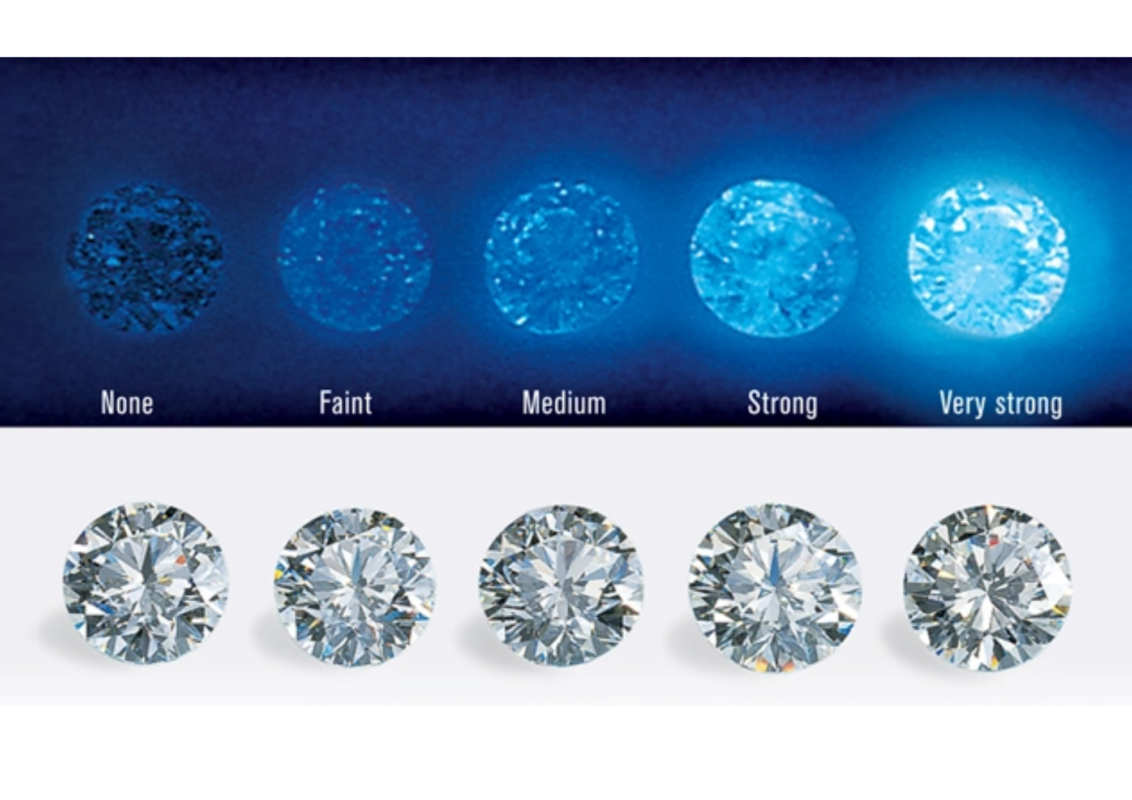
GIA include fluorescence information on diamond grading reports and graded as None, Faint, Medium, Strong, or Very Strong.
Fluorescence can affect a diamond's beauty:
1. Appearance in normal light: - Strong fluorescence can sometimes make a diamond appear hazy or oily in normal daylight, especially in diamonds with lower color grades.
2. Color perception: - Blue fluorescence (the most common type) can counteract yellowish tints in diamonds, making them appear whiter. - This effect is more noticeable in diamonds with lower color grades (I-M on the GIA scale).
3. Brightness and brilliance: In most cases, fluorescence has little to no impact on a diamond's brightness or brilliance. However, very strong fluorescence may slightly reduce transparency in some diamonds.
4. Market value: Diamonds with no fluorescence or faint fluorescence typically command higher prices. Strong fluorescence can sometimes decrease a diamond's value.
S.Diamond choose by with certificate Look for diamonds graded by reputable laboratories like GIA or HRD to guarantee that diamond is 100% natural, not lab-grown and to make sure that the quality of the diamond (colour, clarity, carat weight, cut) meets a standard.
From the above mentioned Choosing a good diamond should take into account many factors together. Choosing a diamond by touching it with your eyes will give you a better understanding.
If you would like to inquire for more details or learn more about diamond selection principles, please contact S.Diamond Central World, 1st floor, Jewelry zone.
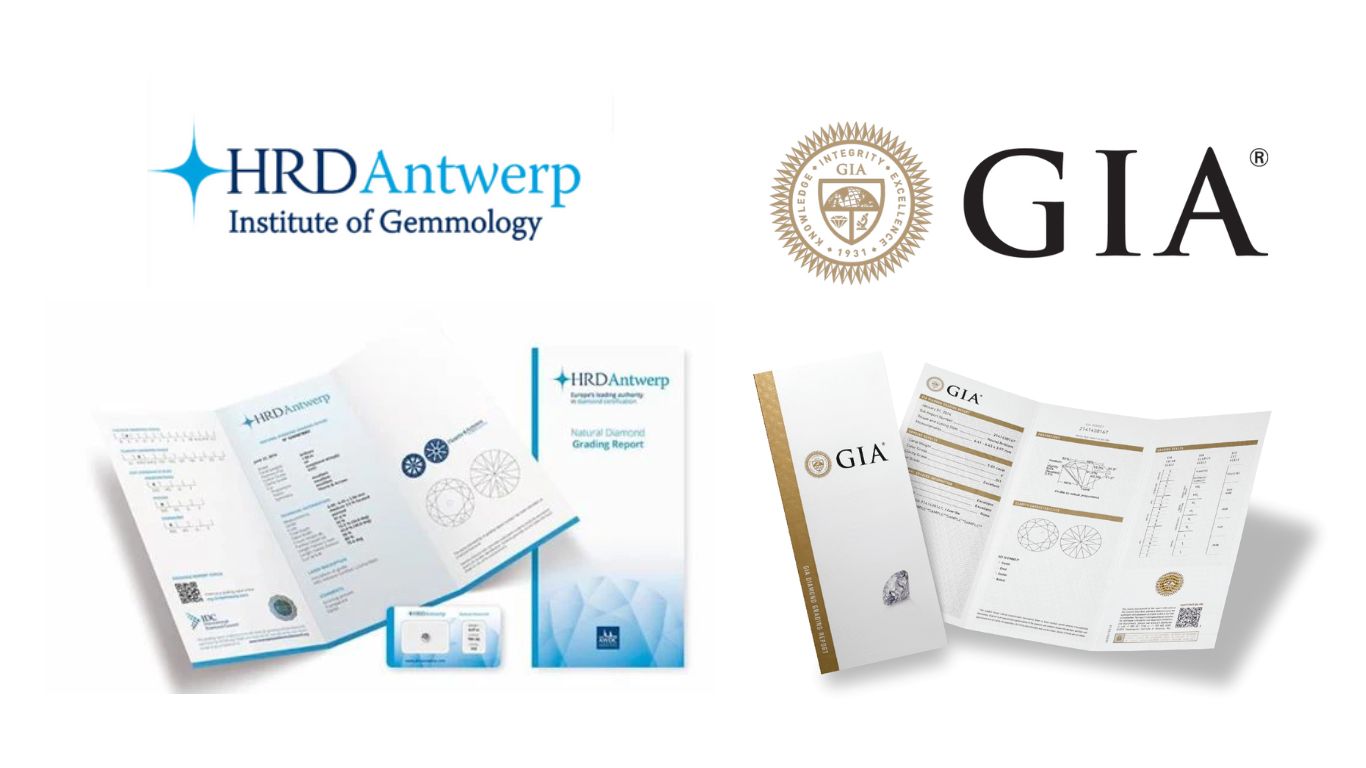
Engagement ring promotion, wedding ring promotion Click here
